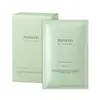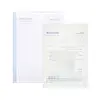What's inside
What's inside
 Key Ingredients
Key Ingredients

 Benefits
Benefits

 Concerns
Concerns

No concerns
 Ingredients Side-by-side
Ingredients Side-by-side

Diatomaceous Earth
AbrasiveGlucose
HumectantCI 77231
Cosmetic ColorantAlgin
MaskingTetrasodium Pyrophosphate
BufferingMagnesium Oxide
AbsorbentCellulose Gum
Emulsion StabilisingMentha Piperita Leaf
RefreshingHydrolyzed Collagen
EmollientCentella Asiatica Leaf/Stem Powder
Euterpe Oleracea Pulp Powder
AbrasiveDehydroacetic Acid
PreservativeAllantoin
Skin ConditioningPotassium Alginate
Emulsion StabilisingAdenosine
Skin ConditioningBetaine
HumectantTrehalose
HumectantSodium Hyaluronate
HumectantDiatomaceous Earth, Glucose, CI 77231, Algin, Tetrasodium Pyrophosphate, Magnesium Oxide, Cellulose Gum, Mentha Piperita Leaf, Hydrolyzed Collagen, Centella Asiatica Leaf/Stem Powder, Euterpe Oleracea Pulp Powder, Dehydroacetic Acid, Allantoin, Potassium Alginate, Adenosine, Betaine, Trehalose, Sodium Hyaluronate
 Reviews
Reviews

Ingredients Explained
These ingredients are found in both products.
Ingredients higher up in an ingredient list are typically present in a larger amount.
Allantoin is a soothing ingredient known for its protective and moisturizingg properties. Because of this, it is often added to products with strong active ingredients.
Studies show higher concentrations of this ingredient can promote wound healing.
Though it can be derived from the comfrey plant, allantoin is produced synthetically for cosmetic products to ensure purity.
Learn more about AllantoinSodium Hyaluronate is hyaluronic acid's salt form. It is commonly derived from the sodium salt of hyaluronic acid.
Like hyaluronic acid, it is great at holding water and acts as a humectant. This makes it a great skin hydrating ingredient.
Sodium Hyaluronate is naturally occurring in our bodies and is mostly found in eye fluid and joints.
These are some other common types of Hyaluronic Acid:
Learn more about Sodium Hyaluronate